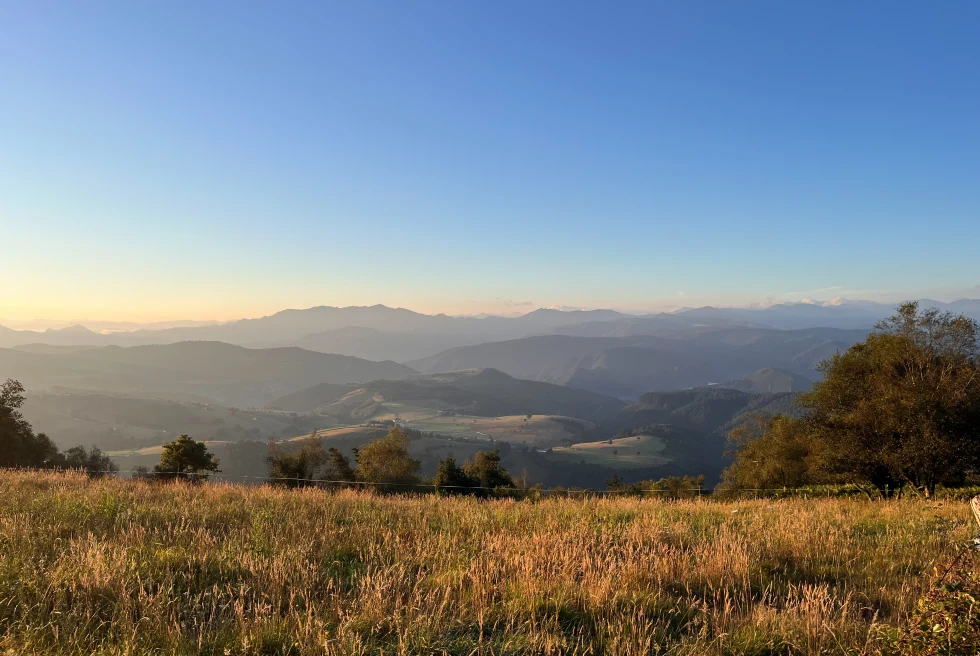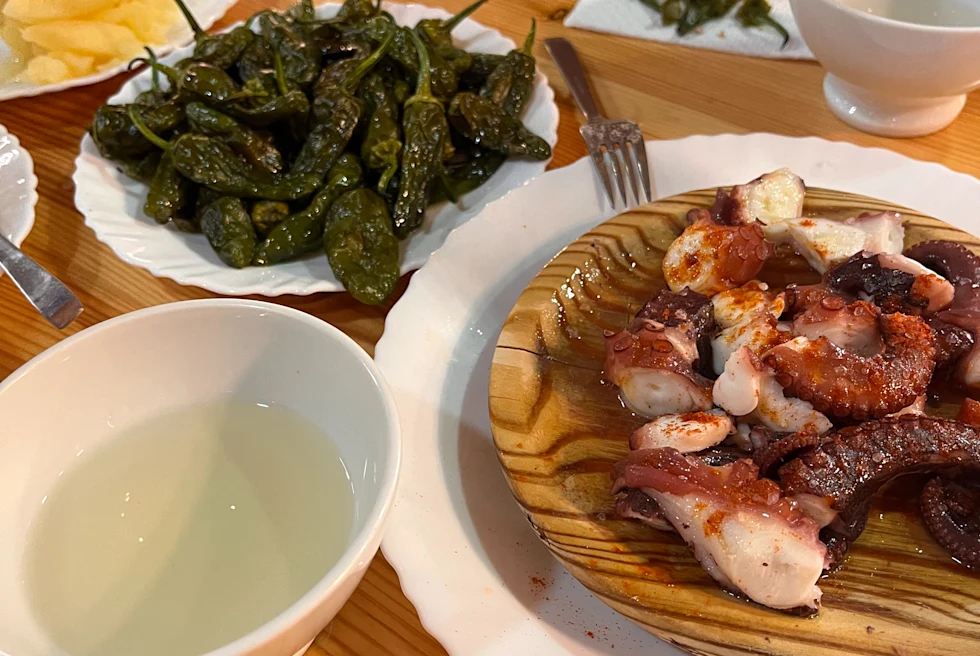
Curator’s statement
There are thousands of itineraries for a walk to Santiago de Compostela from all over Europe and the rest of the world. The walk is an inner journey that will not leave you indifferent in which faith, sport, art or nature can be your motivation. Whatever it is, it is always a great experience. To know the origin of the Camino de Santiago is to know the Primitive Way, which the legendary Asturian King Alfonso II made in the 8th century, as the first pilgrim, between Oviedo (in the Principality of Asturias) and Santiago de Compostela (in Galicia). For many, it is the most iconic and demanding of all the sections of the Camino in Europe. A journey that will take you through paths of legendary history and will make you climb almost close to heaven at its highest stage (the mythical Hospitales stage). Which is why it is only recommended for the most trained and adventurous. The Camino de Santiago is today traveled every year by thousands of people, but this route is the most desired by almost all of them. Following in the footsteps of the first pilgrim is evocative and will give you a great experience to know the best of Asturias and Galicia.
The Fora Difference
Book with Covadonga to access exclusive perks and experiences on your trip.
Killer perks
Free upgrades, spa credits and more—we got you
Personalized recs
Customized travel planning for your style
Insider knowledge
Expert advice from people who’ve actually been there
Where to stay in Asturias and Galicia, Spain
Unlock perks by contacting Covadonga to book your trip.
Things to do in Asturias and Galicia, Spain

Meet the UNESCO World Heritage Site in the Cathedral of San Salvador (Oviedo), its Holy Chamber, with the jewels of the Asturian kings and the Holy Shroud. Visit Oviedo, the capital of the Principality of Asturias, with a historic center that includes pre-Romanesque monuments unique in the world.
Walk the road between ancient forests and peaks full of nature in which you will walk almost alone, with the only company of the sound of water or wind and the sight of cows or horses grazing. Let the rain or snow wet your face.
Enjoy the walled city of Lugo, the only Roman defensive construction that still remains complete, which is also a UNESCO heritage site.
Taste the "pulpo a feira" with good wine D.O.C. Ribeiro in Melide and all the Asturian and Galician gastronomy that will not leave you indifferent: Cangas wine, Asturian Fabada, Arzúa cheese, Santiago cake and so many other delicacies.
Experience the excitement of arriving in Santiago, hear the bagpipes playing when you enter the Plaza del Obradoiro, visit the Portico de la Gloria and the Crypt where the remains of St. James rest.
Places to eat & drink in Asturias and Galicia, Spain

Terra Astur (Oviedo). Get to know Asturian gastronomy. Enjoy its ancestral drink, cider.
Casa Pachón (Salas) Fantastic homemade food known by all pilgrims on the Camino.
Restaurant Capilla de Merás (Tineo): First quality products, combining the most traditional recipes (elaborated with delicacies of Tineo's gastronomy), with the bet for the new cuisine where you will be able to expose your palate to the purest pleasure.
The New allandesa (Pola de Allande): Traditional Asturian food restaurant.
Campos Restaurant (Lugo): High-quality products of Galician cuisine: seafood and meats. Elegant setting in a historic building.
Abastos 2.0 (Santiago): Renowned market cuisine in the Abastos market in Santiago.
Bar la Tita (Santiago): Probably the best potato omelet in the world!
Pampin Bar: Fantastic dishes of traditional Galician cuisine to share, fresh fish, stews and marinades!

Travel Advisor
Covadonga Riesco

Get in touch with Covadonga
Did you like this guide? Reach out to customize and book your own experience. Or, just to chat about travel in general.
You can expect a response from Covadonga within 1–2 business days. You’ll also be subscribed to our traveler newsletter (you can unsubscribe at any time).
For more travel tips, check out this 3-Day Family-Friendly Guide to Madrid, Spain by Fora Advisor Juli Hall.